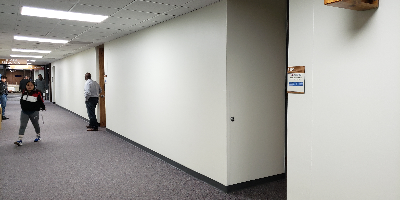oct 4, 1901 - Argentine smelter's last day of operation
Description:
October 4, 1901, was the Argentine smelter's last day of operation. Only 100 men were still on the payroll. The small Vitriol Department would remain open for almost a year. It employed only 50 men, however. A prevailing gloom now descended over the town for Argentine's biggest employer had ceased operations. The livelihood of at least 700 families was effected and many of these were forced to move away. Many refused to believe that the smelter's closing was permanent. August Meyer, a member of the Board of Directors of the Guggenheim smelting trust, tried for months to get the smelter reopened, but even his efforts failed. Standing as a silent testimony to the glories of a bygone era was the huge brick smokestack that stood on the north side of Metropolitan Avenue near 21st Street. Constructed about a year before the smelter's closing, it contained 700,000 bricks, cost $20,000 to build and stood 187 feet in height. In 1958, the smokestack was razed to make room for a storm sewer, thus removing the last vestige of Argentine's era as the "Silver Refining Capital of the World". The smelter's closing resulted in the greatest financial crisis Argentine ever faced. It was a deciding factor in convincing town officials to seek annexation into Kansas City, Kansas. Other financial setbacks also facilitated this decision. A prolonged railroad strike severely effected the town in 1894. In a bank failure in 1896, the town lost $22,000. The town's treasurer embezzled $18,000 in 1897 and a smallpox epidemic in 1902-03 cost the town $5,000. Source: http://www.ksgenweb.org/wyandott/argentine/03.htmAdded to timeline:
Date:
oct 4, 1901
Now
~ 124 years ago
